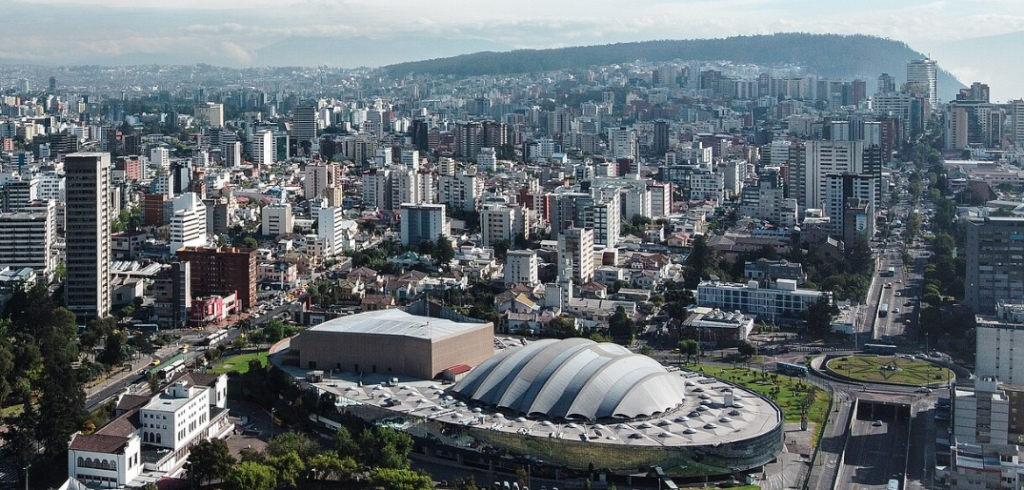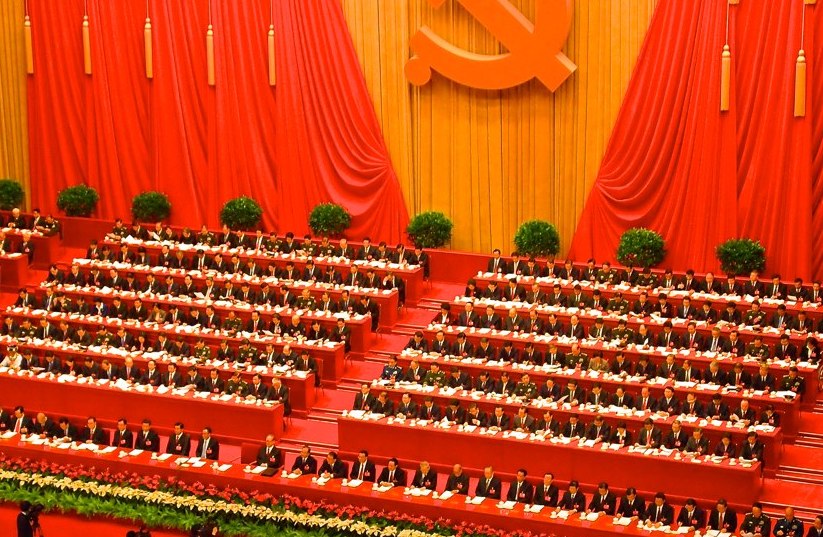This post is also available in: English Português
Ecuador’s minister of economy and finance, Juan Carlos Vega, met with his Chinese counterpart, Lan Fo’an, in Beijing on Sept. 23 for talks about bilateral cooperation and economic relations. The discussion included Ecuador’s debt to China, which is close to $3 billion, in addition to Ecuador’s energy problems, some of which stem from flaws in Chinese-built energy infrastructure projects that have come to light in recent years. How does Ecuador’s debt influence its relationship to China? How does it complicate President Daniel Noboa’s attempts to improve the country’s fiscal situation? What leverage does Ecuador have in pressing China to address the flaws in its energy infrastructure?
Margaret Myers, director of the Asia & Latin America Program at the Inter-American Dialogue: “Ecuador is among the countries in Latin America with a greater relative debt burden to China. As noted in the Inter-American Dialogue’s and Boston University’s report ‘Feeling the Stones: Chinese Development Finance to Latin America and the Caribbean,’ Guyana and Ecuador have comparable levels of public and publicly guaranteed debt to Chinese creditors, at about 3.6 percent of GDP in each case. However, their expected debt payment burdens are quite different, with Ecuador’s payment burden expected to be several times that of Guyana as a share of projected exports. Juan Carlos Vega’s discussions in Beijing no doubt focused to some degree on the country’s outstanding debt to China and on prospects for managing it—a topic of bilateral focus for several years now. In 2020, China Development Bank agreed to restructure two tranches of Ecuador’s debt. At that time, the loan’s interest rate was to remain at 7.16 percent, and outstanding debt was divided into 11 eventual payments of approximately $38 million each. A second agreement, reached in September 2020 by China Development Bank and Ecuador’s Ministry of Finance, reportedly gave Ecuador a 16-month grace period on an additional $474 million in debt. In 2022, Ecuador and China reached another agreement to restructure $4.4 billion of Ecuador’s debt with Chinese banks. Despite ongoing debt talks with China, Vega also sought new Chinese investment in energy and public safety projects, including through meetings with top Chinese development finance institution officials. China is already heavily involved in these sectors in Ecuador and other countries. Whether Chinese companies will now expand their presence in Ecuador, and through what types of deals, remains to be seen.”
R. Evan Ellis, research professor of Latin American studies at the U.S. Army War College’s Strategic Studies Institute: “The Daniel Noboa government, facing unprecedented security and drought-related challenges, high levels of public debt and a critical national election on Feb. 9, 2025, is seeking help from all possible sources on financing, new investment and security capabilities. Beyond China, such efforts include U.S. security cooperation, the IMF’s Resilience and Sustainability Facility and controversial ‘debt-for-nature’ swaps. In his trip to China, Minister Vega sought investments in the petroleum and other sectors, and financing for China Road and Bridge Corporation to build the Santa Elena Prison. It is unknown whether Vega brought up the Coca Codo Sinclair dam, for which Ecuador paid Chinese companies $2.45 billion, but whose shoddy planning and workmanship prevents the dam from being used at more than half capacity, and for which Ecuador wants China to take responsibility. The $3 billion that Ecuador still owes to China, including for Coca Codo Sinclair, is only a small fraction of the $12 billion it borrowed under former President Rafael Correa. Much of this is through contracts in which Chinese banks provided Ecuador credit to fund work by Chinese companies, repaid by petroleum deliveries over multiple years. Ecuador lost an estimated $4.2 billion via the discounted price received for that oil. The obligation for oil deliveries to China UNIPEC expires in December, while two delivery obligation contracts with Petrochina expire in 2027. While Vega sought more resources, China likely sought to renew or extend these disadvantageous contracts. Ecuadoreans consulted for this commentary say the trip did not produce concrete agreements.”
Jiang Shixue, professor and director of the Center for Latin American Studies at Shanghai University: “Ecuador’s relationship with China has been quite good. Within only one year of negotiation (from February 2022 to February 2023), the bilateral free trade agreement came into being. Chinese people can now easily purchase Ecuadorean shrimp and other goods at very low prices. Apart from this free trade agreement, China has made lots of investments and also offered loans. This economic cooperation is win-win. The so-called Chinese debt trap is groundless and counterfactual. It was the United States that created a debt trap for Latin America in the 1970s. At that time, Latin American countries borrowed heavily from U.S. commercial banks. Therefore, at the end of 1970, their total outstanding debt from all sources totaled only $29 billion. Much of the borrowings were not invested into Latin America’s productive sectors. On the one hand, Chinese loans to Ecuador are quite limited in quantity; on the other, all the capital went to the South American country’s productive sectors. Therefore, the Chinese loans can strengthen Ecuador’s economic prospects. The best example is the Coca Codo Sinclair hydroelectric plant, completed in November 2016. This project can supply Ecuador with more than one-third of its electricity needs and even some of the power can be exported to neighboring countries. No less important is the fact that the whole process of construction was environment-friendly. With a tinted lens, however, the American media look at the story in a totally different way. As a matter of fact, China’s economic cooperation has benefited Latin America’s economy and a prosperous region can reduce illegal migration and drug smuggling into the United States.”
 The Latin America Advisor features Q&A from leaders in politics, economics, and finance every business day. It is available to members of the Dialogue’s Corporate Program and others by subscription.
The Latin America Advisor features Q&A from leaders in politics, economics, and finance every business day. It is available to members of the Dialogue’s Corporate Program and others by subscription.



